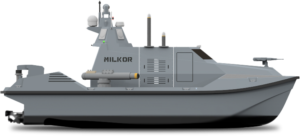Information About Marine Communication Systems
2 min read
Effective communication is paramount in maritime operations, where coordination between vessels, shore facilities, and other stakeholders is essential for safe and efficient navigation. Marine communication systems in UAE encompass a diverse array of technologies and protocols designed to facilitate reliable data exchange, navigation assistance, and emergency coordination across vast oceanic expanses.
VHF radio communication:
Very High Frequency (VHF) radio communication is the backbone of marine communications, providing ship-to-ship and ship-to-shore voice and data transmission capabilities. VHF radios operate within designated frequency bands and are widely used for routine communications, navigational safety broadcasts, and distress calls. Their line-of-sight range makes them ideal for short to medium-range communications in coastal and inland waters.
MF/HF radio communication:
Medium Frequency (MF) and High Frequency (HF) radio systems are utilized for long-range communications beyond the reach of VHF radios. MF/HF radios allow ships to communicate over vast distances, making them crucial for oceanic voyages and transoceanic shipping routes. These systems are also used for transmitting weather forecasts, maritime safety information, and distress signals via established international channels such as the Global Maritime Distress and Safety System (GMDSS).
Satellite communication:
Satellite communication technology has reformed maritime connectivity by providing global coverage and smooth communication capabilities even in remote or maritime regions lacking terrestrial infrastructure. Satellite communication systems allow ships to access voice, data, and internet services for operational purposes, crew welfare, and emergency communications. Satellite phones, broadband internet, and satellite-based tracking systems are among the key applications of this technology in maritime operations.
Automatic identification system (AIS):
The Automatic identification system (AIS) is a collision avoidance technology mandated for most commercial vessels and many larger recreational boats. AIS transponders continuously broadcast vessel information, including identity, position, course, and speed, to nearby ships and shore stations. This real-time data exchange improves situational awareness, aids in vessel traffic management, and helps prevent collisions in busy waterways.
GMDSS and emergency communication:
The Global Maritime Distress and Safety System (GMDSS) is an internationally recognized framework for maritime emergency communication and distress alerting. GMDSS integrates various communication technologies, including satellite, MF/HF radio, VHF radio, and digital selective calling (DSC), to ensure timely and effective response to distress situations at sea. Shipboard GMDSS equipment allows vessels to transmit distress signals, receive maritime safety information, and communicate with search and rescue authorities during emergencies.



